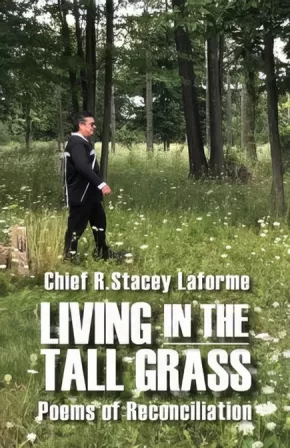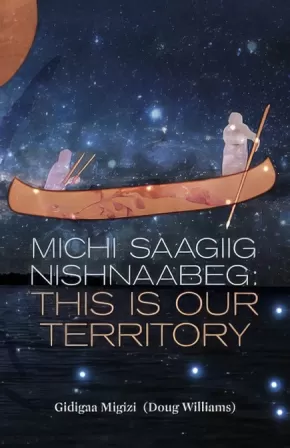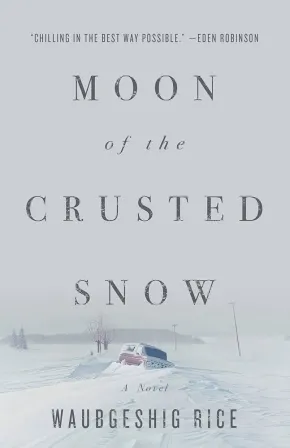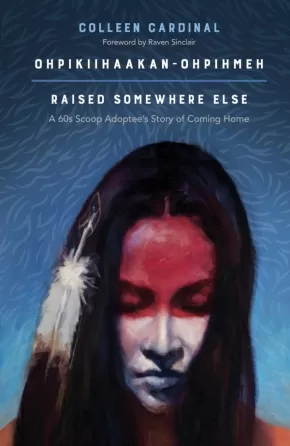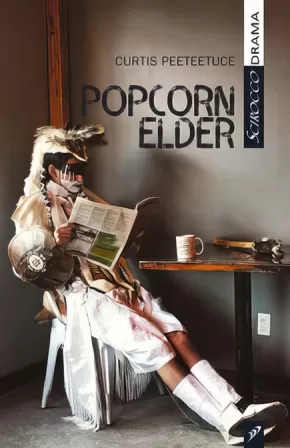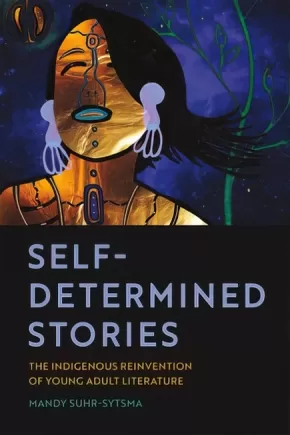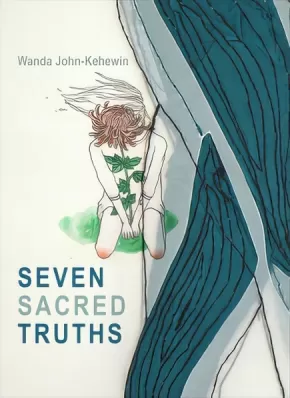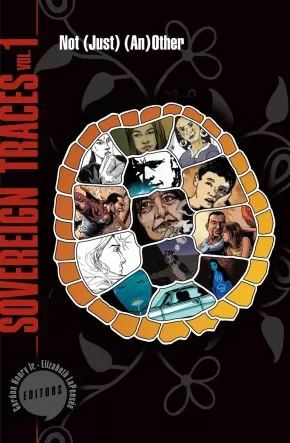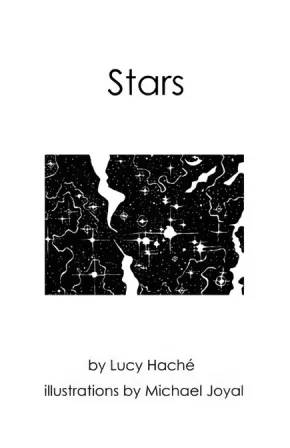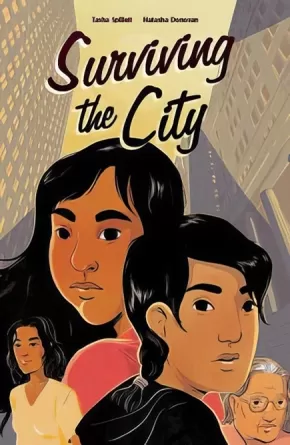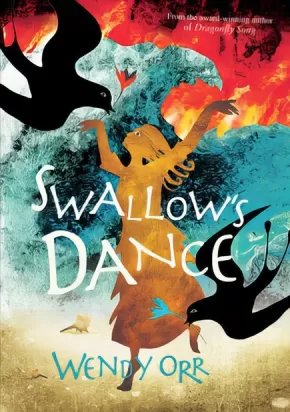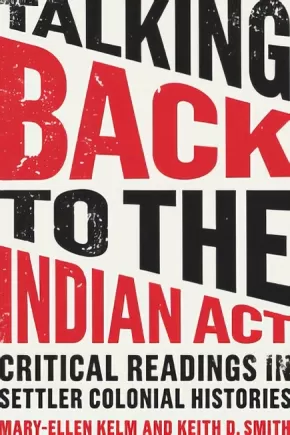
English Language Arts
61
-
75
of
146 Results;
Sort By
Go To
of 10
Living in the Tall Grass: Poems of Reconciliation
$19.95
Format:
Paperback
Text Content Territories:
Indigenous Canadian; First Nations; Anishinaabeg;
ISBN / Barcode: 9781988824055
Synopsis:
Synopsis:
“We should not have to change to fit into society the world should adapt to embrace our uniqueness.” -- Chief Stacey Laforme
In Living in the Tall Grass: Poems of Reconciliation, Chief Stacey Laforme gives a history of his Anishinaabe people through stories and poetry to let Canadians see through the eyes of Indigenous people. Living in the Tall Grass is written in a way that makes the reader feel he or she might be sitting down with Chief Laforme, sharing experiences from their lives. Some poems share humour, while others express pain, though each comes from the heart.
Reviews
"Laforme is a high-profile leader, attending scores of events, large and small in Ontario and gently reminding listeners that most of the southern part of the province is the traditional homelands of the Mississaugas of the New Credit. True to his belief in the longer-lasting impact of the arts, he’ll often open a speech with a verse. “The future lies in the arts, and it lies in all our youth, not just the Indigenous youth,” he says. “Arts make change … if we can share a moment through the arts whether its song, dance, poetry, painting, it transcends even language barriers." — Steve Milton, The Hamilton Spectator
Educator Information
Recommended for Grades 5-12 for English Language Arts.
Caution: Some poems touch on violence and suicide.
Themes: hope, the environment, Residential Schools.
Additional Information
160 pages | 5.50" x 8.50" | duotone photographs
Michi Saagiig Nishnaabeg: This Is Our Territory
$22.00
Format:
Paperback
Text Content Territories:
Indigenous Canadian; First Nations; Anishinaabeg; Mississauga; Curve Lake First Nation;
ISBN / Barcode: 9781927886090
Synopsis:
Synopsis:
In this deeply engaging oral history, Doug Williams, Anishinaabe elder, teacher and mentor to Leanne Betasamosake Simpson, recounts the history of the Michi Saagiig Nisnaabeg, tracing through personal and historical events, and presenting what manifests as a crucial historical document that confronts entrenched institutional narratives of the history of the region. Edited collaboratively with Simpson, the book uniquely retells pivotal historical events that have been conventionally unchallenged in dominant historical narratives, while presenting a fascinating personal perspective in the singular voice of Williams, whose rare body of knowledge spans back to the 1700s. With this wealth of knowledge, wit and storytelling prowess, Williams recounts key moments of his personal history, connecting them to the larger history of the Anishinaabeg and other Indigenous communities.
Reviews
"This book gives us an alternative perspective on historical record that is both personal and collective. Doug Williams reminds us of the generations of Indigenous knowledge keepers and of a history that stretches back prior to European contact-including the disruption of contact. This book is his gift to the Michi Saagiig and to all Anishinaabek. It is also a gift to Canadians who want to help decolonize this country. - Armand Garnet Ruffo
"Storytelling is not just a gift. It's not just an art. It's also a responsibility: the weaving together of history, philosophy, culture and humour frequently highlighting a culture's perspective on the world. Doug Williams has been doing this as long as I can remember. He lives the culture, not just talks about it. The people and places he talks about in Michi Saagiig Nishnaabeg are more a part of our history then all the things going on in Ottawa." - Drew Hayden Taylor
Educator Information
Recommended in the Canadian Indigenous Books for Schools 2019-2020 resource list as being useful for grades 9 to 12 for Creative Writing, English Language Arts, Media Studies, and Social Studies.
Additional Information
168 pages | 5.50" x 8.50"
Moon of the Crusted Snow: A Novel
$22.95
Format:
Paperback
Text Content Territories:
Indigenous Canadian; First Nations; Anishinaabeg;
ISBN / Barcode: 9781770414006
Synopsis:
Synopsis:
A daring post-apocalyptic novel from a powerful rising literary voice.
With winter looming, a small northern Anishinaabe community goes dark. Cut off, people become passive and confused. Panic builds as the food supply dwindles. While the band council and a pocket of community members struggle to maintain order, an unexpected visitor arrives, escaping the crumbling society to the south. Soon after, others follow.
The community leadership loses its grip on power as the visitors manipulate the tired and hungry to take control of the reserve. Tensions rise and, as the months pass, so does the death toll due to sickness and despair. Frustrated by the building chaos, a group of young friends and their families turn to the land and Anishinaabe tradition in hopes of helping their community thrive again. Guided through the chaos by an unlikely leader named Evan Whitesky, they endeavor to restore order while grappling with a grave decision.
Blending action and allegory, Moon of the Crusted Snow upends our expectations. Out of catastrophe comes resilience. And as one society collapses, another is reborn.
Reviews
“This slow-burning thriller is also a powerful story of survival and will leave readers breathless.” — Publishers Weekly
"Rice seamlessly injects Anishinaabe language into the dialogue and creates a beautiful rendering of the natural world. . . This title will appeal to fans of literary science fiction akin to Cormac McCarthy as well as to readers looking for a fresh voice in indigenous fiction.” — Booklist
“Perfect for those who read Iain Reid's Foe this summer and are looking for something in the same vein.” — The Globe and Mail
“The creeping tension and vividly drawn landscapes make Waubgeshig Rice’s characters choices all the more real.” — Toronto Star
“Moon of the Crusted Snow asks how do we live in a good way during the collapse of the infrastructure that supports modern life? For Evan Whitesky, the answer lies in rekindling Ojibwe, the old ways, language and culture. For other characters, when the food runs out, all options are on the table, no matter how gruesome. As the tensions between those surviving the end of modern civilization build to a harrowing conclusion, Rice deftly weaves tender family moments with his brutal survival scenes in the unforgiving northern Ontario winter. Chilling in the best way possible.” — Eden Robinson, award-winning author of Monkey Beach and Son of a Trickster
Educator Information
Recommended in the Canadian Indigenous Books for Schools 2019-2020 resource list as being useful for grades 10 to 12 for English Language Arts.
Contains strong language and mature subject matter relating to violence and death.
Additional Information
224 pages | 5.50" x 8.50"
My Heroes Have Always Been Indians: A Century of Great Indigenous Albertans
$24.95
Format:
Paperback
Text Content Territories:
Indigenous Canadian;
ISBN / Barcode: 9781550597547
Synopsis:
Synopsis:
In a series of inspirational profiles, Cora Voyageur celebrates 100 remarkable Indigenous Albertans whose achievements have enriched their communities, the province, and the world.
As a child, Cora rarely saw Indigenous individuals represented in her history textbooks or in pop culture. Willie Nelson sang “My Heroes Have Always Been Cowboys,” but Cora wondered, where were the heroes who looked like her? She chose the title of her book in response, to help reflect her reality.
In fact, you don’t have to look very hard to find Indigenous Albertans excelling in every field, from the arts to business and everything in between. Cora wrote this book to ensure these heroes receive their proper due.
Some of the individuals in this collection need no introduction, while others are less well known. From past and present and from all walks of life, these 100 Indigenous heroes share talent, passion, and legacies that made a lasting impact.
Read about:
- Douglas Cardinal, the architect whose iconic, flowing designs grace cities across Alberta, across Canada, and in Washington, DC,
- Nellie Carlson, a dedicated activist whose work advanced the cause of Indigenous women and the education of Indigenous children,
- Alex Janvier, whose pioneering work has firmly established him as one of Canada’s greatest artists,
- Moostoos, “The Buffalo,” the spokesperson for the Cree in Treaty 8 talks who fought tirelessly to defend his People’s rights,
- And many more.
Educator Information
Recommended in the Canadian Indigenous Books for Schools 2019-2020 resource list for grades 10 to 12 for these subject areas: English Language Arts, Social Studies.
This book focuses on Indigenous Albertans.
Additional Information
240 pages | 5.90" x 9.00"
Ohpikiihaakan-ohpihmeh — Raised Somewhere Else: A 60s Scoop Adoptee's Story of Coming Home
$20.00
Format:
Paperback
Text Content Territories:
Indigenous Canadian; First Nations; Cree (Nehiyawak); Plains Cree;
ISBN / Barcode: 9781773630205
Synopsis:
Synopsis:
During the 60s Scoop, over 20,000 Indigenous children in Canada were removed from their biological families, lands and culture and trafficked across provinces, borders and overseas to be raised in non-Indigenous households.
Ohpikiihaakan-ohpihmeh — Raised Somewhere Else delves into the personal and provocative narrative of Colleen Cardinal’s journey growing up in a non- Indigenous household as a 60s Scoop adoptee. Cardinal speaks frankly and intimately about instances of violence and abuse throughout her life, but this book is not a story of tragedy. It is a story of empowerment, reclamation and, ultimately, personal reconciliation. It is a form of Indigenous resistance through truth-telling, a story that informs the narrative on missing and murdered Indigenous women, colonial violence, racism and the Indigenous child welfare system.
Reviews
“With Canadians slowly awakening to the reality of the 60s Scoop and its ongoing repercussions, Cardinal’s inspiring work here is essential reading and will be an integral resource for generations to come.” — Waubgeshig Rice, author of Legacy
“Offers a window through which readers can see why cultural suppression is such a dark chapter in Canada’s history.” — Winnipeg Free Press
“I highly recommend reading this story for anyone interested in learning more about the Sixties Scoop and understanding what’s really happening under the stereotypes put on many Indigenous by those who do not truly understand.” — All Booked
Educator Information
The Canadian Indigenous Books for Schools list recommends this resource for Grades 10-12 for English Language Arts.
Additional Information
214 pages | 6.00" x 9.00" | Foreward by Raven Sinclair
Popcorn Elder
$15.95
Format:
Paperback
Text Content Territories:
Indigenous Canadian; First Nations; Cree (Nehiyawak);
ISBN / Barcode: 9781927922392
Synopsis:
Synopsis:
Darren, newly on parole from prison, has been ordered by the court to live with his father on the rez. Wally and Darren have always had a contentious relationship: Wally is a problem drinker, and Darren's got a short fuse. But Wally tells his son that he's changed, has stopped drinking and started going to ceremony, and he urges Darren to do the same. As old family secrets start to be revealed, the father and son grapple with complex issues.
Popcorn Elder examines the problem of "plastic shamans" who offer spirituality at a price. It looks at a community working to face its demons and heal past trauma. And at the heart of the play is the story of a father and son, filled with anger, guilt, and pain, seeking connection and reconciliation.
Through flashbacks, a combination of Cree and English, and an unforgettable cast of characters, Popcorn Elder tells the story of one family's journey toward hope.
Educator Information
Contains sexual abuse references and explicit language.
Recommended in the Canadian Indigenous Books for Schools 2019-2020 resource list for grades 10 to 12 for Acting, Drama, English Language Arts, and Social Studies.
Additional Information
72 pages | 5.50" x 8.50"
Red River Resistance
$21.95
Artists:
Format:
Paperback
Text Content Territories:
Indigenous Canadian; Métis;
ISBN / Barcode: 9781553797470
Synopsis:
Synopsis:
Echo Desjardins is adjusting to her new home, finding friends, and learning about Métis history. She just can’t stop slipping back and forth in time. One ordinary afternoon in class, Echo finds herself transported to the banks of the Red River in the summer of 1869. All is not well in the territory as Canadian surveyors have arrived to change the face of territory, and Métis families, who have lived there for generations, are losing access to their land. As the Resistance takes hold, Echo fears for her friends and the future of her people in the Red River Valley.
Educator & Series Information
Recommended for grades 5 to 9.
Red River Resistance is volume two in the graphic novel series, A Girl Called Echo, by Katherena Vermette.
Books in this series include:
Volume 1: Pemmican Wars
Volume 2: Red River Resistance
Volume 3: Northwest Resistance
Volume 4: Road Allowance Era
Recommended in the Canadian Indigenous Books for Schools 2019-2020 resource list as being useful for grades 5-12 with regard to these subjects: English Language Arts, Art Education, Social Studies.
This book is available in French: Elle s'appelle Echo Tome 2: La guerre du Pemmican
Additional Information
47 pages | 6.50" x 10.00"
Self-Determined Stories: The Indigenous Reinvention of Young Adult Literature
$29.95
Format:
Paperback
Text Content Territories:
Indigenous American; Indigenous Canadian;
Grade Levels: University/College;
ISBN / Barcode: 9781611862980
Synopsis:
Synopsis:
Reimagining Indigenous empowerment.
The first book of its kind, Self-Determined Stories: The Indigenous Reinvention of Young Adult Literature reads Indigenous-authored YA-from school stories to speculative fiction-not only as a vital challenge to stereotypes but also as a rich intellectual resource for theorizing Indigenous sovereignty in the contemporary era.
Building on scholarship from Indigenous studies, children’s literature, and cultural studies, Suhr-Sytsma delves deep into close readings of works by Sherman Alexie, Jeannette Armstrong, Joseph Bruchac, Drew Hayden Taylor, Susan Power, Cynthia Leitich Smith, and Melissa Tantaquidgeon Zobel. Together, Suhr-Sytsma contends, these works constitute a unique Indigenous YA genre. This genre radically revises typical YA conventions while offering a portrayal of Indigenous self-determination and a fresh critique of multiculturalism, heteropatriarchy, and hybridity. This literature, moreover, imagines compelling alternative ways to navigate cultural dynamism, intersectionality, and alliance-formation.
Self-Determined Stories invites readers from a range of contexts to engage with Indigenous YA and convincingly demonstrates the centrality of Indigenous stories, Indigenous knowledge, and Indigenous people to the flourishing of everyone in every place.
Contents
Introduction
Ch. 1: A Rebel with a Community, Not Just Cause: Revising YA Power Dynamics and Uniquely Representing Indigenous Sovereignty in Jeannette Armstrong's Slash
Ch. 2: Indigenous School Stories: Alternatives to Multiculturalism in Sherman Alexie's The Absolutely True Diary of a Part-Time Indian and Joseph Bruchac's The Heart of a Chief
Ch. 3: Not Your Father's Pocahontas: Cynthia Leitich Smith's and Susan Power's Resistive Romance
Ch. 4: That's One Story: Reworking Hybridity through Melissa Tantaquidgeon Zobel's and Drew Hayden Taylor's Speculative Fiction
Coda: Alexie's Flight, Zobel's Wabanaki Blues, and the Future of Indigenous YA Literature
Additional Information
214 pages | 6.00" x 9.00"
Seven Sacred Truths
$18.95
Format:
Paperback
Text Content Territories:
Indigenous Canadian; First Nations;
ISBN / Barcode: 9781772012132
Synopsis:
Synopsis:
Seven Sacred Truths explores the perspective of an Indigenous Woman on a continuous journey of healing from trauma.
Seven Sacred Truths presents a powerful exploration of an Indigenous woman's healing journey. Seeing the world through "brown" eyes, poet Wanda John-Kehewin makes new meaning of the past, present, and future through a consideration of Love, Wisdom, Truth, Honesty, Respect, Humility, and Courage. By sharing her views on these Seven Sacred Truths and what they meant to her growing up, John-Kehewin instigates a therapeutic process of restoration and transformation. Her Seven Sacred Truths uncovers new meaning in the written word - meaning that can be shared with others who have lived trauma or who want insight into it. John-Kehewin strives to create a safe space and provide the opportunity to experience another perspective; she invites readers to embark on their own healing journeys. The closer you are to the truth, she writes, the freer you become.
Wanda John-Kehewin uses writing as a therapeutic medium to understand and respond to the near-decimation of First Nations cultures and traditions.
Educator Information
Recommended in the Canadian Indigenous Books for Schools 2019-2020 resource list for grades 10 to 12 for English Language Arts.
Additional Information
120 pages | 5.50" x 8.50"
Sovereign Traces: Not (Just) (An)Other
$29.95
Format:
Paperback
Text Content Territories:
Indigenous American; Indigenous Canadian;
ISBN / Barcode: 9781938065064
Synopsis:
Synopsis:
A unique collection of graphically reimagined fiction and poetry.
By merging works of contemporary North American Indigenous literature with imaginative illustrations by U.S. and Canadian artists, Sovereign Traces: Not (Just) (An)Other provides a unique opportunity for audiences to engage with works by prominent authors such as Stephen Graham Jones, Gordon Henry Jr., Gerald Vizenor, Warren Cariou, Niigaanwewidam James Sinclair, Louise Erdrich, Joy Harjo, Richard Van Camp, and Gwen Westerman.
Through this exciting medium, Sovereign Traces beckons to audiences that are both new to and familiar with Native writing, allowing for possibilities for reimagined readings along the way.
Readers will find works of graphic literature, uniquely including both poetry and fiction, newly adapted from writing by Indigenous North Americans.
Writers
Warren Cariou, Louise Erdrich, Joy Harjo, Gordon G. Henry Jr., Stephen Graham Jones, Sheldon Raymore, Niigaanwewidam James Sinclair, Richard Van Camp, Gerald Vizenor, Gwen Nell Westerman
Illustrators and Colourists
Weshoyot Alvitre, Evan Buchanan, Nicholas Burns, GMB Chomichuk, Scott B. Henderson, Elizabeth LaPensée, Tara Ogaick, Neal Shannacappo, Delicia Williams, Donovan Yaciuk
Content
Preface: Beginnings and Future Imaginings
Foreword: Not (Just) (An)Other
Werewolves on the Moon
The Prisoner of Hiaku
Ice Tricksters
An Athabasca Story
Trickster Reflections
The Strange People
Deer Dancer
Mermaids
Just Another Naming Ceremony
Reviews
“Not just another book for fans of Indigenous stories and comics alike, this collection locates myth not in the past, but in the mundane, drawing on traditional cultures and stories to depict current Indigenous lives in their many complex forms.” — Nyala Ali, Winnipeg Free Press
Additional Information
128 pages | 6.62" x 10.12"
Stars
$19.95
Artists:
Format:
Paperback
Text Content Territories:
Indigenous Canadian; First Nations; Kwakwaka'wakw (Kwakiutl);
ISBN / Barcode: 9781988168104
Synopsis:
Synopsis:
In this second installation of the Overhead Series, Lucy Haché once again transports the reader with intimate revelations on identity by exploring both her personal and ancestral relationship to the sky and stars. Hache's prose is extraordinary in its combination of self-awareness yet unselfconscious honesty and skillful restraint, creating a sense of connection under the vastness of the stars above. Masterfully illustrated by artist Michael Joyal, his evocative astronomic drawings contribute to the overall sensory and transcendent experience.
Reviews
"[Hache] uses the stars to remember not only the tribulations of the past - Residential Schools and the loss of her traditional village - but also to remember the happiness of her grandmothers and to remember her language. Her poetic prose if full of imagery so rich that the reader can feel swept away with the power of the language." - Canadian Indigenous Books for Schools 2018-2019
"Indigenous People have always had a strong relationship with the sky. Here, Joyal's stark, beautiful illustrations combine perfectly with Haché's voice as she sings a story of loss, and ultimately, reclamation." --David A. Robertson, author of When We Were Alone (winner 2017 Governor General's Literary Award) and Strangers
Educator & Series Information
Recommended resource for Grades 8-12 for these subject areas: English Language Arts.
A Kwak'wala language glossary is found at the back of the book.
This book is part of the Overhead Series.
Additional Information
80 pages | 5.50" x 8.50"
Surviving the City Vol. 1
$21.95
Artists:
Format:
Paperback
Text Content Territories:
Indigenous Canadian; First Nations; Cree (Nehiyawak); Anishinaabeg;
ISBN / Barcode: 9781553797562
Synopsis:
Synopsis:
Tasha Spillett’s graphic novel debut, Surviving the City, is a story about womanhood, friendship, colonialism, and the anguish of a missing loved one.
Miikwan and Dez are best friends. Miikwan is Anishinaabe; Dez is Inninew. Together, the teens navigate the challenges of growing up in an urban landscape – they’re so close, they even completed their Berry Fast together. However, when Dez’s grandmother becomes too sick, Dez is told she can’t stay with her anymore. With the threat of a group home looming, Dez can’t bring herself to go home and disappears. Miikwan is devastated, and the wound of her missing mother resurfaces. Will Dez’s community find her before it’s too late? Will Miikwan be able to cope if they don’t?
Awards
- Winner of the 2019 Indigenous Voices Award for Works in an Alternative Format
- Co-winner of the Eileen McTavish Sykes Award for Best First Book by a Manitoba Author
- Winner of the Manuela Dias Design and Illustration Award, Graphic Novel category
Educator & Series Information
Recommended Grades: 7-12.
This graphic novel is part of the Surviving the City series, which is also part of the Debwe Series.
The Surviving the City series includes these titles:
- Surviving the City
- From the Roots Up
- We Are the Medicine
Recommended in the Canadian Indigenous Books for Schools 2019-2020 resource list for grades 10 to 12 for English Language Arts and Social Studies.
This book could be triggering for some readers as it contains mature content and focuses on issues such as Missing and Murdered Indigenous Women and Girls.
A Teacher Guide is available: Surviving the City Teacher Guide: Exploring Identity, Allyship, and Social Action for Meaningful Change in Grades 7-12
Additional Information
56 pages | 6.50" x 10.00"
Swallow's Dance (2 in Stock) - ON SALE!
$16.50 $21.95
Format:
Hardcover
ISBN / Barcode: 9781772780628
Synopsis:
Synopsis:
Leira is about to start her initiation as a priestess when her world is turned upside down. A violent earthquake leaves her home--and her family--in pieces. And the earth goddess hasn't finished with the island yet.
With her family, Leira flees across the sea to Crete, expecting sanctuary. But a volcanic eruption throws the entire world into darkness. After the resulting tsunami, society descends into chaos; the status and privilege of being noble-born are reduced to nothing. With her injured mother and elderly nurse, Leira must find the strength and resourcefulness within herself to find safety.
A thrilling new Bronze Age survival story from the award-winning author of Dragonfly Song and Nim's Island.
Reviews
"[Orr's] mixture of prose and free verse to tell Leira's story is lyrical and magnetic—and devastating. Not for readers searching for a simple or happy journey, this is a beautiful song of a book that shows that life isn't always fair, but change is always constant."—Kirkus Reviews
"Leira's lyrical first-person narrative advances the story along beautifully with a fitting sense of urgency, and free-verse songs clue readers in to her emotional development. Immersive historical fiction."—Booklist Starred Review
"Some chapters written in verse make the more emotional plotlines sing. An eye-opening look at how difficult it is when one's status changes in life, and how attitude can shape outcome. VERDICT: Beautiful writing and a fast-moving plot will give young historical fiction fans much to love."—School Library Journal
"Leira's protracted fall from grace is effectively punctuated by seamless narrative shifts among prose, verse, and song, which fans of Orr's Dragonfly Song will recognize. What she endures—the uncertainty of her family's fate and becoming a servant herself—makes for a gripping exploration of privilege during her journey toward womanhood."—Bulletin for the Center for Children's Books
"Swallow's Dance is a sweeping tale of courage, fortitude, hardship and perseverance against all odds. It is also a coming of age story, an intimate glimpse into the life of a young girl adjusting to puberty at a time when her family, friendships and her understanding of her place in the world are brutally torn apart. Wendy Orr has crafted a sympathetic, memorable heroine whose struggles and challenges transcend time from the Bronze Age to modern day....While suitable for middle-grade students and a wonderful introduction to mythology and discussions surrounding puberty, spirituality, class, mental health, death and disaster, Swallow's Dance is one of those rare books that is also just a great story, an epic tale for all ages. Highly Recommended."—CM Magazine
"Top notch historical fiction for those who like it ancient!... The scenes of devastation – earthquake in Santorini, tsunami in Crete – are riveting to experience through the lens of a survivor."—Youth Services Book Review
"Orr's attention to character development is extremely well done....Swallow's Dance could be used in conjunction with the grades-five-to-eight Language Arts or Social Studies curriculum and would be great to teach students how to incorporate symbolism and imagery through free verse and poetry. In addition, Swallow's Dance could also be used to teach students about family, culture, history and the importance of the role of women in society. A fantastic novel to use as a read-aloud or novel study!"—Canadian Children's Book News
Educator Information
Recommended Ages: 10-14
Themes/Subjects: Legends, Myths, Fables - Greek & Roman / Historical - Ancient Civilizations / Action & Adventure - Survival Stories / Coming of Age.
Additional Information
288 pages | 5.50" x 8.00"
Talker's Town and The Girl Who Swam Forever
$18.95
Format:
Paperback
Text Content Territories:
Indigenous Canadian; First Nations; Salish; Coast Salish; Sto:lo; Katzie First Nation;
ISBN / Barcode: 9781772012019
Synopsis:
Synopsis:
The two one-act plays in Talker’s Town and The Girl Who Swam Forever are set in a small northern B.C. mill town in the 1960s. They portray identical characters and action from entirely different gender and cultural perspectives. In many ways, the two separate works are inter-related coming-of-age stories, with transformation as a key theme.
The central action in both plays involves an Aboriginal girl, Roberta Bob, who escapes from a residential school and hides out by the river. In Nelson Gray’s Talker’s Town, the story is conveyed by a teenage non-Indigenous boy whose friend has had a relationship with the girl and whose attempts to hush up the affair lead to disastrous consequences.
In Marie Clements’s The Girl Who Swam Forever, the action unfolds from the perspective of the girl, who – to claim her past and secure her future – must undergo a shape-shifting transformation and meet her grandmother’s ancestral spirit in the form of a hundred-year-old sturgeon.
Employing a single setting and working with the same set of characters, the playwrights have created two radically different fictional worlds, one Aboriginal and one non-Aboriginal. Published together, the plays form a fascinating diptych that reveals rifts between Indigenous and colonial/settler histories and provides a vehicle for cultural exchange. As a starting point for trans-cultural dialogue, this set of plays will be of interest to educators, theatre directors, and the general reader interested in the current discourse arising from Canada’s Truth and Reconciliation Commission, Idle No More, and the Indigenous Rights Movement happening throughout North America. Read as a set, these two plays also invite conversations about negotiating creative boundaries, particularly with respect to eco-centric politics and cultural appropriation.
Talker’s Town: cast of 5 men and 1 woman.
The Girl Who Swam Forever: cast of 2 women and 2 men.
Educator Information
Recommended in the Canadian Indigenous Books for Schools 2019-2020 resource list for grades 11 and 12 for Drama and English Language Arts.
Additional Information
160 pages | 5.50" x 8.50"
Talking Back to the Indian Act: Critical Readings in Settler Colonial Histories
$39.95
Format:
Paperback
Text Content Territories:
Indigenous Canadian;
ISBN / Barcode: 9781487587352
Synopsis:
Synopsis:
Talking Back to the Indian Act is a comprehensive "how-to" guide for engaging with primary source documents. The intent of the book is to encourage readers to develop the skills necessary to converse with primary sources in more refined and profound ways. As a piece of legislation that is central to Canada’s relationship with Indigenous peoples and communities, and one that has undergone many amendments, the Indian Act is uniquely positioned to act as a vehicle for this kind of focused reading.
Through an analysis of thirty-five sources pertaining to the Indian Act—addressing governance, gender, enfranchisement, and land—the authors provide readers with a much better understanding of this pivotal piece of legislation, as well as insight into the dynamics involved in its creation and maintenance.
Educator Information
Recommended in the Canadian Indigenous Books for Schools 2019-2020 resource list for grades 11 and 12 for English Language Arts, Law, and Social Studies.
Additional Information
248 pages | 6.00" x 9.00"
Sort By
Go To
of 10

